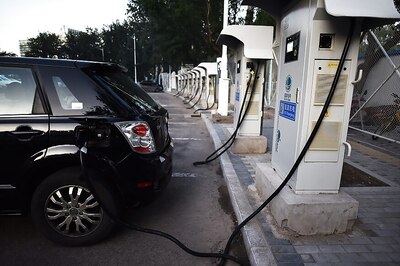
views
Battery as well as charging technology has evolved in multiple aspects – be it charging speeds, form factors for chargers or bigger batteries. Starting from the 20W charging to the 125W charging technologies, they have significantly increased and improved performance metrics. It is on the shoulders of this evolution, that one has the luxury to enjoy four hours of video playback on just five minutes charge as opposed to five minutes charge two hours talktime, that was a common feature earlier. Not only this, but form factors have also changed drastically over time to ensure the ease of use for customers – like wireless chargers and ultra-small chargers which provide flash charging to users who like to power up on the go.
Fast or safe?
The stimulus for this change has always been the evolution of other features – like camera, performance etc. Today, the world of smart devices has moved leaps and bounds to embrace the connected ecosystem, which is aided by the developments in 5G and the emerging technologies. With this mega development, arises the need for enhanced power requirements for mobile handsets – which is a challenge for both wired and wireless technologies, keeping user safety in mind. There is a need to adopt a holistic approach to develop fast charging hardware, to minimize potential safety hazards and risks while providing an ultra-fast and secure charging experience.
Where is the limit for fast charging?
Smartphone brands are rising to the challenge creating innovative charging technology that use a magnetic configuration system to ensure precise alignment between the phone and the charger. The developing technology comes with an ultra-thin flash charger, which adopts a split design making the whole charger thinner. The design of both devices allows them to be easily portable. Additionally, the wireless flash charging stand helps users save up to 60% of preparation time as compared to conventional wired charging. As a brand that’s committed to optimising its technologies and products, the aim is to cover a diverse user journey map. This new smart charging technology can quickly adjust charging power on the fly in order to maximise safety and efficiency, even while the device is in use.
Furthermore, adopting a five-fold safety protection system including a specially customised intelligent control chip that regulates voltage, current, and the temperature has also helped deliver the safest charging experience. Chargers today come with a built-in heat pump, designed and tested to guarantee a safe solution to heat management during charging.
Charging for the future
The arrival of 5G is accelerating the Convergence of Everything. It has prompted the speedy emergence of a new generation of consumer electronics, including smartphones, tablets, Bluetooth speakers, and drones. An entire new categories of electronic products are being launched. And disruptive, power-hungry new functions like HD video phone calls are demanding more than ever from the charging technologies and device batteries. The 5G era is predicated on a series of driving technologies, particularly power technologies. What this means is that a vital research problem for the industry is improving battery life and charging technologies until they can support the fast computation, a large number of connections, and long periods on standby required by 5G devices. Charging technology will need to adapt to faster speeds, lower-cost, and safer technologies. Every additional feature that consumers demand from their smart devices means more stringent demands on their device batteries and charging technology. As a key focus of the Convergence of Everything, charging technologies are about to begin a new round of challenges and innovation.
Written by Tasleem Arif, VP and R&D Head, Oppo India.
Read all the Latest Tech News and Breaking News here



















Comments
0 comment